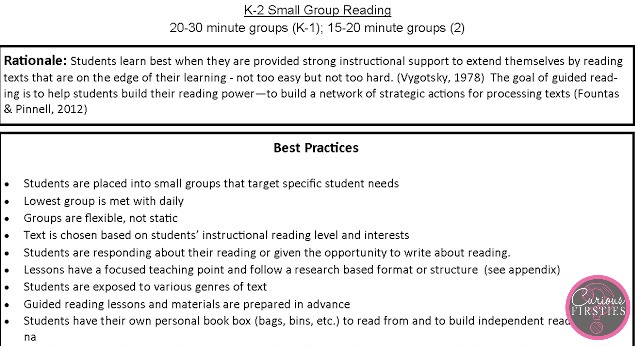An overview
High Quality Instruction
Universal Screening
Research Based Interventions
Continuous Progress Monitoring
Fidelity
RtI meetings
Professional Development
This is where we needed to start when my building sat down to really talk about RtI. Before we could look at interventions, RtI meetings, etc, we needed to determine if we were all on the same page with our Core classroom instruction. And that is what we did. We started with our reading instruction.
My district has a reading program that is followed. But as we know, reading programs have a lot in them. There is no way to hit everything that is in them. So we pick what matches the needs, the standards, and what we all feel is best. But this can also be tricky.
So we started with large chart paper. I wrote each ELA standard on a separate piece of paper. In vertical meetings (K-2), each teacher wrote down what they were doing to hit that particular standard or how it was hit in the basal program.
Then came the hard part...determining what we felt was best practice and backed by research. We wanted to ensure that we were utilizing our time and resources to their fullest potential. Please don't think this was an easy discussion. It never is. We all have activities that we like to do, but that doesn't always mean that they are the best utilization of our time.
By looking at each standard and the ways of teaching it, in this type of detail, we were able to outline a literacy framework.
After looking at many different samples, we decided our framework would include:
- an outline for each component of literacy that should be found in each classroom (here is one example):
- Guidelines of best practices for each of those literacy components (here is one sample):
- Description of what students and teachers are doing (another sample):
- Resources for each component of the ELA block: books, websites, articles
- Glossary of terms
- Definition of teacher roles
- Common vocabulary to use as a building (this is to help students as they move from grade to grade)
- Common materials needed. We included the sight word lists that we would use as a building and some common vocabulary assessments that could be used.
- As a building, we had a great foundation to start this framework.
- Many best practices were already in place.
- Teachers had a strong knowledge base about research based strategies
- We needed to "tighten" our times spent on different literacy components in order to "free" up time for Tier II interventions.
- We were not hitting vocabulary to the degree that we would have liked; therefore, we came up with a plan and a weekly assessment to integrate more vocabulary instruction.
- Common usage of terms needed to be address because it would be beneficial to our students.
With the literacy framework complete, we can now focus on our next chapter: universal screenings and their impact to uncover our Tier II needs.
Em







How wonderful that your staff was able to work together to make your reading program better. That's what it's all about, isn't it? We are constantly changing, questioning ourselves, and trying to make our programs better. We started RTI at my school about 8 years ago. The it started, we followed the model to a "T" our most needy groups were no larger than 4 students and met with a teacher 4 times a week for 45 minutes. They were taught using a scripted program. The groups grew larger from there. With budget cuts and changes in administration, our RTI has changed. We no longer have the support staff so all of our groups have grown. Because the staff has bought into this method of teaching, we do everything we can to make it work. We still run small groups and often bring in parent volunteer and community members to help out. I usually work with the "on or approaching grade level group". The children are assessed with running records and I pull small groups to read books at their level. The children that are not at my table read out of their book box and respond in a reading journal. The below grade level groups do a combination or SIPPS, (scripted program) and leveled books. It seems to be working, we see a lot of progress, but I certainly wish we had someone to help guide us and keep us informed on the newest practices etc. My school is 60% EL and the majority fall in the below grade level groups. Thank you for ALL of your posts-I read and learn from each and every one of them!
ReplyDeleteJulie, heyjbales@sbcglobal.net - First Grade.
Wow. Wow. Wow. This is huge. I'm very impressed with the work, progress, and conversations your school is having.
ReplyDelete